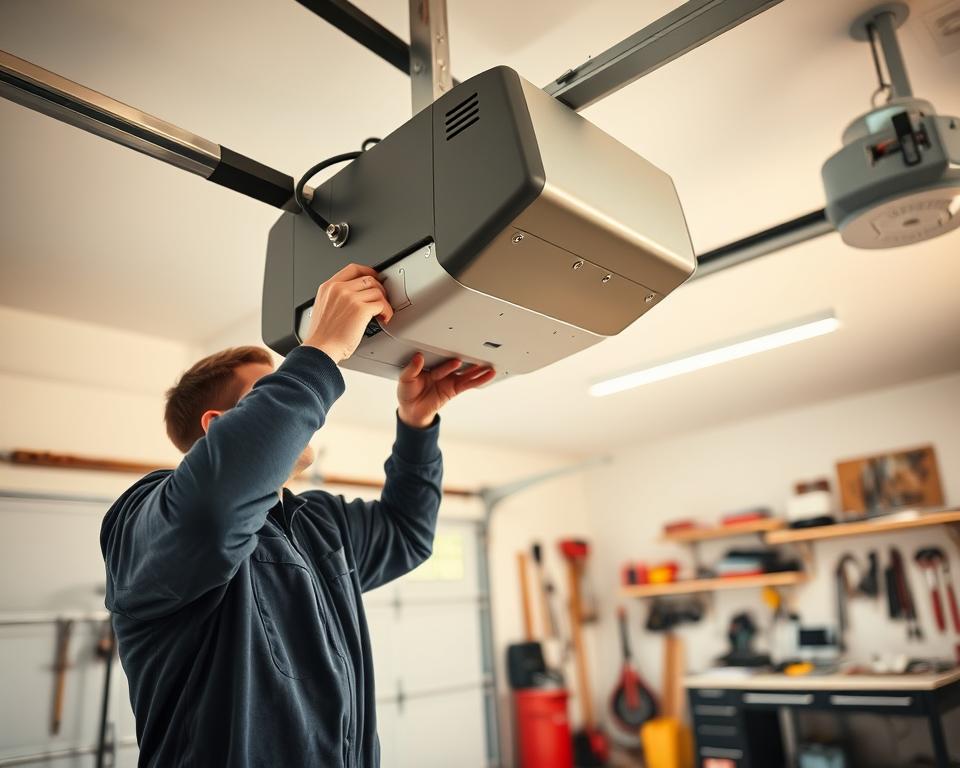Accomplished Garage Door Repair Company in Rossmoor
Maybe you’ve contemplated how significant a working garage door is for your residence’s safety and ease? When selecting a garage door repair service in Rossmoor, recognizing the importance of capability and trustworthiness is vital. Coastline Garage Doors rises above, offering repair, installation, and maintenance to address your garage door requirements. Their assembly of skilled technicians prioritizes customer delight, confirming your garage door operates flawlessly. This augments both security and performance – local garage door installation.
What Makes You Select Coastline Garage Doors?
Picking Coastline Garage Doors indicates you receive incomparable proficiency from a group of capable professionals. We are a reliable garage door repair company in Rossmoor, famous for our qualified technicians. They go through comprehensive preparation to confirm their expertise.
Our pledge to clarity differentiates us apart. When you choose our garage door service Rossmoor, you acquire an upfront estimate. This eradicates any surprises, creating trust and allowing you to reach informed judgments.
We support our standard with the Neighborly Done Right Promise™. This confirms every assignment satisfies the top standards. Coastline Garage Doors is the personification of trustworthiness and competence, establishing us the prime pick for your garage door needs.
Thorough Garage Door Repair Help
Coastline Garage Doors is a leading option for garage door repair in Rossmoor. We offer comprehensive repair services for a variety of troubles property owners face. Our skilled technicians are skilled at repairing all primary garage door and opener types.
Our options comprise:
- Panel replacement for harmed or deteriorated sections
- Opener repair to ensure trouble-free action
- Spring exchange for ideal door operation
- Scheduled maintenance checks to avoid future issues
We focus on using top-notch parts and follow exacting safety standards for every repair. This allegiance to superiority secures each repair is not just successful but also durable. Trust Coastline Garage Doors to return your garage door system back in top state, ensuring it functions effortlessly and efficiently.

Garage Door Installation in Rossmoor
Upgrading your property often initiates with garage door installation Rossmoor. Coastline Garage Doors delivers a variety of alternatives to suit your property flawlessly. Our group applies the newest tools and continues informed on present-day trends for a seamless installation.
Custom garage doors Rossmoor are a feature of our provisions. They boost your residence’s appearance, security, and thermal performance. Choose from time-honored wooden doors to contemporary stainless steel designs. We’ll modify our options to suit your taste and necessities.
Our skilled staff will support you pick the right garage door. It will mirror your individual style while complying with safety standards. Trust Coastline Garage Doors for all your garage door installation necessities in Rossmoor.
Trustworthy Garage Door Opener Repair in Rossmoor
Coastline Garage Doors shines in garage door opener repair Rossmoor, seeking to resolve a vast range of problems. Our team handles everything from remote malfunctions to full system failures. Each technician experiences thorough education to detect and repair both standard and smart garage door openers.
Garage door opener failures can significantly affect your daily life. Our support guarantee your opener operates impeccably, increasing your facility and protection. We’re dedicated to offering superior garage door service Rossmoor that puts customer contentment primarily. Whether you experience periodic problems or entire system collapses, Coastline Garage Doors is ready to help.
We’re dedicated to excellence, employing only the best replacement parts for your opener. This method extends your opener’s longevity. Trust Coastline Garage Doors for reliable repairs that elevate your dwelling’s security and present you peace of mind.
Garage Door Spring Exchange in Rossmoor
Garage door springs are essential for your door’s smooth action. Worn or broken springs can cause the door to glitch or grow frozen. Coastline Garage Doors delivers top-notch garage door spring replacement Rossmoor help. Our skilled technicians examine your springs and provide custom spring repair services Rossmoor.
Choosing the suitable spring variety is crucial for efficiency and lifespan. We possess torsion and extension springs, set up to high safety criteria. Our crew confirms hazard-free installation, decreasing accident risks. Trust us for a reliable garage door spring replacement Rossmoor and witness a significant betterment in your door’s function.
Emergency Garage Door Repair Services in Rossmoor
At Coastline Garage Doors, we recognize the immediacy of garage door issues. Our emergency garage door repair Rossmoor help are on hand 24/7. This confirms you receive quick response when you require it greatly. Fast response times are essential for your safety and safety.
Our skilled technicians are prepared to tackle a assortment of difficulties. This comprises failing openers and injured panels. We focus on pressing garage door service Rossmoor applying advanced equipment and methods. This ensures repairs are performed effectively and productively.
Depend on us for swift evaluations and trustworthy solutions. Our pledge is to restore your garage door’s functionality promptly. Trust Coastline Garage Doors for focused emergency service that prioritizes your peace of mind.
Garage Door Service Alternatives for Both Residential and Commercial Locations
Coastline Garage Doors recognizes the diverse needs of both residence and company owners in Rossmoor. Our service meets any demand, from fast repairs to recent installations. Homeowners profit from our systems, which improve protection and facility.
Commercial customers count on us for constant activities. Our commercial garage door repair Rossmoor confirms businesses run flawlessly. We deal with everything from small adjustments to large installations.
This is a in-depth evaluation of our help:
| Service Category | Residential | Commercial |
|---|---|---|
| Installation | Custom property garage doors | Industrial-grade doors for warehouses |
| Repairs | Spring, opener, and track repairs | Sturdy repairs for frequent use |
| Maintenance | Periodic servicing to prevent problems | Planned maintenance arrangements |
| Emergency Help | 24/7 emergency repairs | Quick response for business continuity |
Signals You Need a Garage Door Repair Company in Rossmoor
Spotting when your garage door demands repair is vital for its utility and security. Residents ought to watch for main markers that suggest a professional assessment is needed. Odd sounds, like grating or high-pitched sounds, when employing the door, often suggest parts are degrading and require repairing.
Sluggish performance is another clear sign. If your garage door consumes more time than usual to elevate or close, it’s a caution signal. Visible deterioration on hinges, springs, or tracks also points to the necessity for skilled aid.
Scheduled inspections are vital, even for slight troubles. Spotting issues in advance can evade larger troubles later. Being alert to these indicators aids preserve your garage door operating well and secure. If you spot any of these markers, don’t wait to get in touch with a reliable garage door repair company in Rossmoor.
Garage Door Maintenance Tips for Long Life
Maintaining your garage door in optimal condition is crucial to its longevity and reliable efficiency. Coastline Garage Doors provides essential tips for garage door care Rossmoor to prevent unforeseen failures and pricey repairs.
Routine examinations are essential for garage door maintenance Rossmoor. An yearly examination can identify issues promptly. During these checks, seek out damage, dislocation, and oxidation on parts.
It’s important to apply lubricant to active parts like rollers, hinges, and tracks. Employ a silicone-based grease for effortless action and to escape friction that can cause early erosion.
- Check the door equilibrium by detaching the opener and by hand raising the door halfway. If it doesn’t stay in place, the springs may call for alteration.
- Verify the automatic reversal capability by setting an thing in the door’s path. The door must reverse upon touch.
- Check the weather sealing at the bottom of the door for holes or impairment. Renewing worn weather stripping will support preserve energy conservation.
By adhering to these simple maintenance tips for garage door care Rossmoor, you can increase your garage door’s durability. Routine maintenance not only preserves resources but also improves your home’s protection.
Customer Feedback for Coastline Garage Doors
At Coastline Garage Doors, we stress customer delight first and foremost. Our patrons often commend the standard of our garage door service Rossmoor. They admire our adept technicians who deliver competent repairs with professionalism. This constructive feedback is a clear indication of our dedication to quality.
Our clients appreciate our rapid response intervals and thorough assessments. This demonstrates our expertise and devotion to maintaining high standards. Their recommendations inspire us to keep improving our assistance.
In conclusion, the endorsements underline the reliance our customers hold in us. Their reaction on our punctuality and trustworthiness supports our objective. We seek to deliver outstanding service in every project.
Final Thoughts
Selecting the suitable garage door repair company in Rossmoor is vital for your property or company’s protection and functionality. Coastline Garage Doors shines as a leading option, providing a wide array of help for both properties and businesses. Our commitment to quality and consistency differentiates us in the industry.
Our staff of knowledgeable technicians is equipped to manage any trouble, from urgent repairs to periodic servicing. Coastline Garage Doors services are created to keep your garage doors’ optimal efficiency. You can trust our proficiency, recognizing your garage door is in professional care.
Don’t imperil your property’s safety. Get in touch with Coastline Garage Doors now to see the result of a dedicated garage door repair service in Rossmoor. Our focus on customer happiness and superior service confirms your garage doors function without issue.









